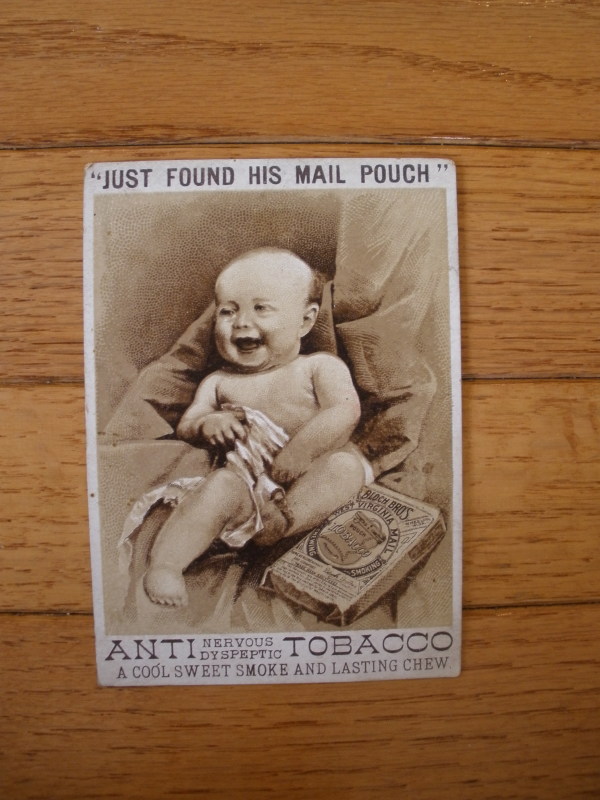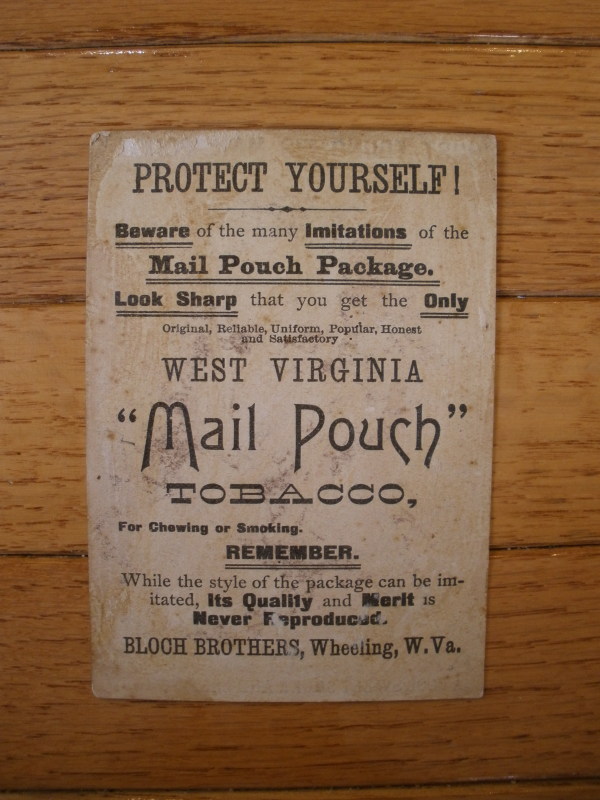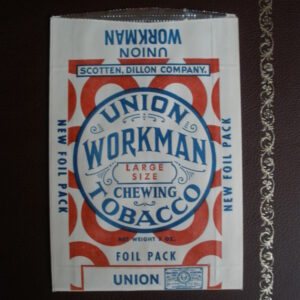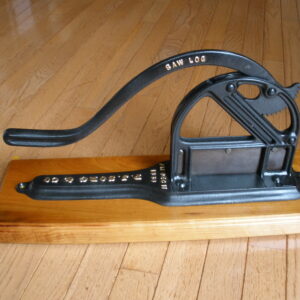For sale is an original 1890 “Just Found His Mail Pouch” Trade Card made by the Bloch Brothers Tobacco Company, Wheeling W.VA. The company’s slogan for their Anti-Nervous/Dyspeptic Tobacco was a “cool sweet smoke and lasting chew”. The card features a disturbing image of a happy baby who has torn into his father’s chewing tobacco. This two-sided card is in excellent condition and measures 5 inches by 3 1/2 inches. An incredible tobacciana collectible.
The Bloch Brothers Tobacco Company, was also known as Helme Tobacco Company. The brothers began manufacturing cigars in 1879 as a side-line to Samuel Bloch’s wholesale grocery business after they discovered that the left-over cigar clippings could be flavored and packaged in a paper bag, and then sold. The company was best known for their Mail Pouch chewing tobacco. The Mail Pouch popular chew was advertised on over 20,000 barns, most of which were located in the rural Ohio River Valley. Each barn had an end or side painted with the familiar Mail Pouch lettering and advertising, “Treat yourself to the best.”
Over a century ago, during the Victorian era, one of the favorite pastimes was collecting small, illustrated advertising cards that we now call trade cards. These trade cards evolved from cards of the late 1700s used by tradesmen to advertise their services. Although examples from the early 1800s exist, it was not until the spread of color lithography in the 1870s that trade cards became plentiful. By the 1880s, trade cards had become a major way of advertising America’s products and services, and a trip to the store usually brought back some of these attractive, brightly-colored cards to be pasted into a scrapbook. Some of the products most heavily advertised by trade cards were in the categories of: medicine, food, tobacco, clothing, household, sewing, stoves, and farm. The popularity of trade cards peaked around 1890, and then almost completely faded by the early 1900s when other forms of advertising in color, such as magazines, became more cost effective.






